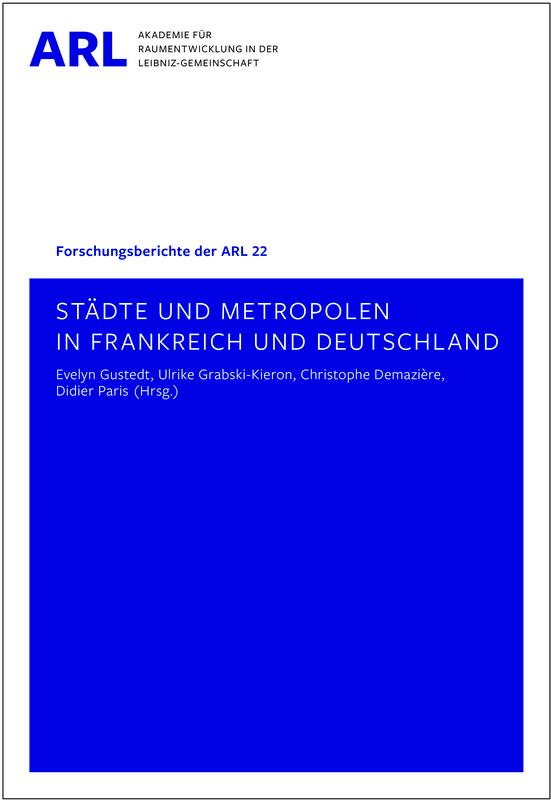Cities and Metropolises in France and Germany – the added value of comparative research
The Research Reports of the ARL ARL (20-22), edited by Evelyn Gustedt, Ulrike Grabski-Kieron and Christophe Demazière, Didier Paris, and now published in English, French and German, are comparatively dedicated to the starting points and trajectories of development of cities and urban systems in Germany and France. Looking at different types of cities and different planning systems, the articles in Research Report 22, now also published in German, show the socio-economic-demographic background and political framework conditions of the current structural and functional change in both countries.
Under consideration of different types of cities and different planning systems, the socioeconomic and demographic backgrounds as well as the political conditions of the current structural and functional transformation in both countries have been demonstrated. Both common and distinct aspects of urban change as well as future challenges for spatial planning and urban and regional development have been elucidated.
In both countries, France and Germany, there is great pressure to change and adapt towards new forms of urbanity and to come up with new strategic approaches in the face of limited public finance and a need for economic efficiency. Not all types of urban areas are equally affected by these issues. The book aims to do justice to this situation, considering in both cases the context of the national urban systems. As it proved impossible to address all the topics relevant to the spatial development of urban and rural areas, the authors decided to concentrate on a number of important topical themes which are undoubtedly relevant in both countries, albeit in different ways, and which could be significant for a comparison. The focus is thus on issues related to metropolises, small and medium-sized towns and particularly current issues of urbanity, sustainability, Smart Cities, transport and mobility, and the role of crossborder urban development. The structure of the chapters is conceived in these terms. Besides scientific and theoretical approaches, the authors also consider the practical planning perspective and methodological aspects of the topic at hand. They mainly address three relevant factors: the differences between the two institutional systems, the development paths and historical constants, and how new challenges are addressed on both sides of the border.
Joint spatial and planning research can lead togains in knowledge and practical results that gobeyond spatial observations. The research funding from both countries can ensure continued opportunities for sharing experiences and transferring results in the future. The primary task now is to pursue and extend this ‘future proofing’ within the outlined approaches to action. The answers to the questions discussed above also play a key role for European cohesion.
The multilingual research reports of the ARL are available (Open Access) at https://www.arl-net.de/shop/forschungsberichte-der-arl-585
Wissenschaftlicher Ansprechpartner:
Dr. Britta Bockhorn
ARL Academy for Territorial Development in the Leibniz Association (Hannover, Germany): Head of International Affairs
Phone: +49 511 34842-25
britta.bockhorn@arl-net.de
arl-international.com
Originalpublikation:
https://www.arl-net.de/shop/forschungsberichte-der-arl-585
Weitere Informationen:
https://www.arl-international.com
Die semantisch ähnlichsten Pressemitteilungen im idw


